I write quite a bit about whisky, castles, and accommodations, but my favorite thing in Scotland is hiking the Scottish countryside. There are so many fantastic hikes in every corner of Scotland that I won’t possibly do them all before I’m dust in the earth. There’s an allure to that idea. Scotland is a comparatively small country — no bigger than my home state of Wisconsin — but every rocky glen, shredded span of coastline, and towering Munro holds something amazing to look upon.
The Bone Caves of Inchnadamph, the subject of today’s post, instantly became one of my favorite hikes in Scotland.
West Sutherland occupies most of the northwest coast from Ullapool to Durness and it’s a largely unpeopled area these days. Empty beaches, windswept heath and peatlands, and mammoth, stony hills crowd the few narrow roads traversing the region. For some it’s a natural Mecca, a chance to escape into the “true” highlands, which is a romantic notion for those who have forgotten the area’s history of eviction during the Highland Clearances. People can’t help but breed dark histories, and they have lived in this part of the world for a very long time.
The Bone Caves of Inchnadamph are evidence of that. The Durnessian Limestone of Assynt, this part of Sutherland, is shot through with caves (the Bone Caves are part of the largest cave formation in Scotland), and a huge variety of bones was discovered in these caves at the end of the 19th century. The caves peer out from the limestone cliff called the Creag nan Uamh (Crag of the Caves) on the northern face of Beinn an Fhuarain, and within the trio of recesses geologists have found thousands of antler and bone fragments from reindeer, arctic foxes, lynxes, wolves, bears, and even humans from up to 45,000 years ago! The Bone Caves appear to have been used for shelter by animals and humans alike when the climate was much colder, but there is more surveying and excavation to be done.
As usual, I stumbled on the Bone Caves of Inchnadamph in the wonderful PocketWalks West Sutherland hiking book (no affiliation). These wonderful little chapbooks easily fit in your pocket so you can refer to them on the hike. I was smitten with the name, and it fit into a day out since Sarah and I were making a loop from our base at the Brochs of Coigach in Achiltibuie. We arrived to a small car park off the road just south of Loch Assynt (the A837) in an austere glen glowing in late afternoon sun. I’d heard this was a popular hike, but the only people we saw on the entire trek were just coming back to their car. A small path led toward a V-shaped glen and immediately past a stunning little waterfall straight out of the Legend of Zelda.
The first stretch of the path, which is clear if narrow, leads to the head of the glen over stony ground and greensward, and we were wondering when we would catch a glimpse of the caves. Most internet data on this hike refers to it as a “fun walk” or “invigorating jaunt,” and even the PocketWalks book gave it a “C” rating (the easiest hike), so our expectations were set accordingly. I’m just going to spoil this now. People are criminally under-representing the quality and nature of this hike. It turned out to be a long and scary journey.
With that spoiler out of the way, we continued along a pretty burn called the Allt nan Uamh (Burn of the Caves) that flowed over loads of shattered limestone boulders. The longer we hiked the closer the hills pressed in until we stood at the head of a narrow glen filled with rocks that significantly increased the difficulty of passage. The burn led right to the base of the hill and disappeared. Just gone. We crouched over the little pool of water marking the beginning of the burn and learned that the water springs up through the limestone as if from nowhere. This is the Fuaran Allt nan Uamh and it’s a special kind of nature magic.
We strove deeper into the valley watching our steps to avoid twisting an ankle on the boulders. We needed to cross the rocky gulch to the south side of the valley since we knew that’s where the caves were, and it seemed like forever (thanks to our unrealistic expectations) until we found a narrow path that allowed us to the other side. At this point, about 45 minutes into the hike, we stopped and pondered going back — I won’t lie — because there was little evidence of the caves and we’d already been on a long hike that day. Then I noticed a big, bald, limestone cliff and knew that was where we needed to go. The dismay in Sarah’s voice was comical. We couldn’t turn back and gain any sense of accomplishment.
The gravel path led steadily up the side of the northern face of Beinn an Fhuarain until it became a series of rough-hewn rock steps. The cliff face became very steep and we literally could not chance looking up or down the mountainside for fear of losing balance and tumbling 500 feet to our deaths. It’s difficult to convey just how precarious the gravel path and steps became especially coupled with the wind howling through the valley. It constantly tested our balance where only a thin lip of earth separated our footfalls from an 80-degree downward slope.
But we made it! The trio of caves are named Badger, Reindeer, and Bone, and they’re all fairly large hollowed-out spaces. You can easily imagine ancient hunter-gatherers resting here and surveying the landscape, or even a group of dwarves with an old wizard and a small hobbit. Sarah and I took time to catch our breath, still our nerves, and peruse the caves. The views over the valley and scree-covered slopes were incredible.
By this point we were long into the hike and a little rattled by the ascent, but the book told us to go even deeper into the valley to descend. We considered going back the way we’d come but again found our mettle and followed the narrow path banding the upper slope as it wound east. And we thought the ascent was fearsome. As we rounded a limestone eminence the wind hit us full force and promised to break us on the rocks below. Our eyes remained locked on the path in front of our feet lest the vertigo claim us. This is the first hike where I actually believed one of us might die. I’m not being melodramatic.
After long on the windy slope the path led downhill and hair-pinned in the valley bottom. We’d made the descent! As we followed suddenly easy boulder-strewn terrain I looked up to Creag nan Uamh and noticed the most interesting rocky formation. What appears to be a man-shaped stone giant rests just below the crag’s crest. See what I mean?
It felt appropriate to see this guardian watching over the valley. We had found his caves and survived his wrath, perhaps with his blessing, and wound our way back through the empty valley toward the car park.
We didn’t tarry as we were deep into evening by this point, but as we neared the end of the hike Sarah spotted some red deer atop the southern hills watching us leave their lands. We had an even bigger surprise just as we passed the waterfall, our car in sight.
Sarah gasped and pointed. There, not 50 yards from us, stood a wizened stag with a huge, fuzzy rack. He stopped browsing on the grass and looked at us, and his gaze took our breath away. How could we not feel like interlopers standing before this lord of the vale? I still can’t believe the encounter happened. A long moment passed in which he seemed to judge us, then he returned to the grass and we step quietly to the car, shellshocked and in awe.
The hike to the Bone Caves of Inchnadamph was long, difficult, scary, and completely worth it. Give it a shot if you’ve got the stones.

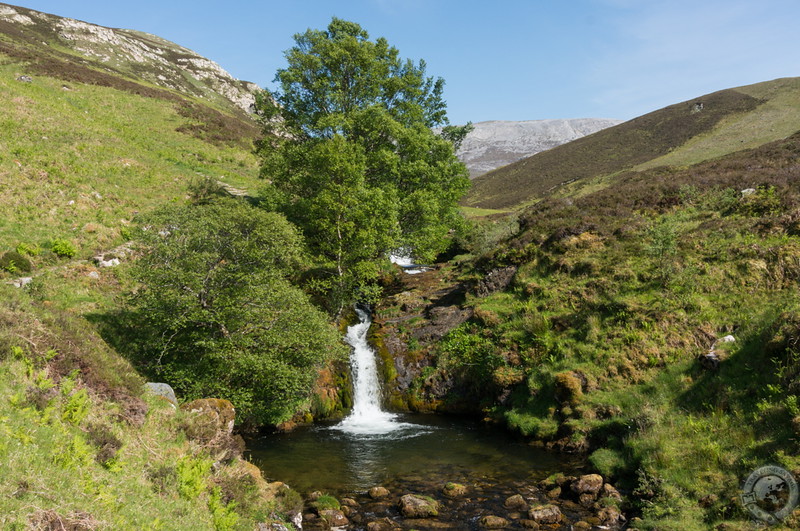
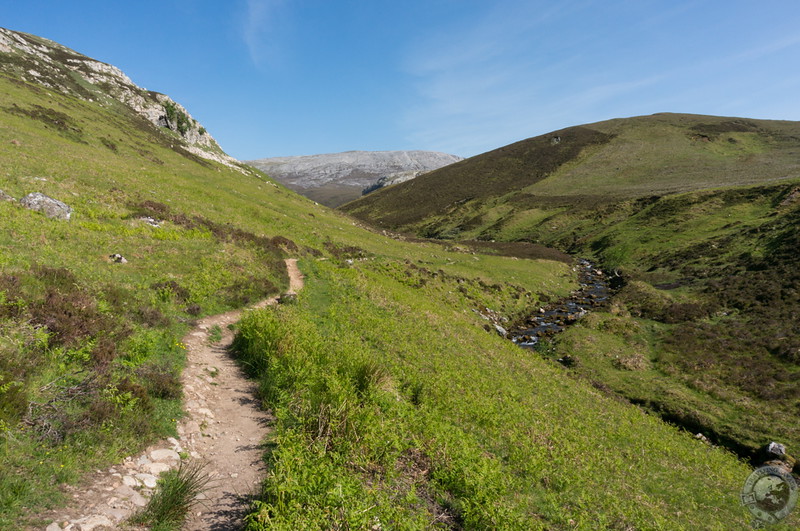
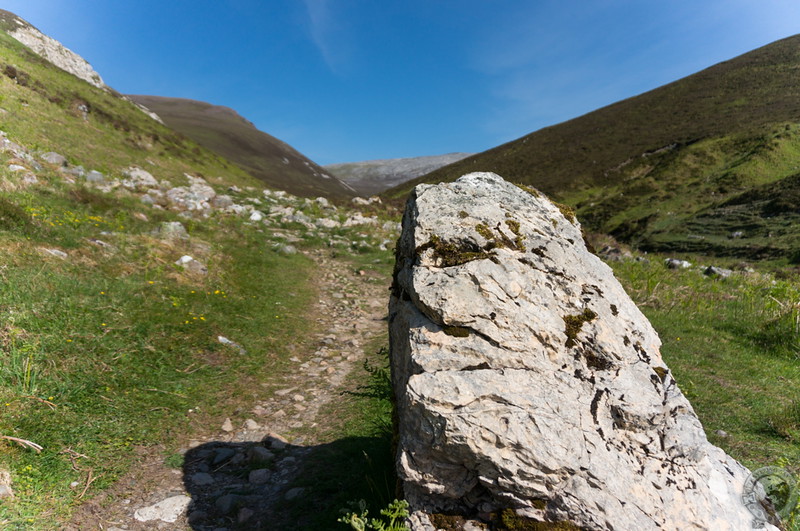
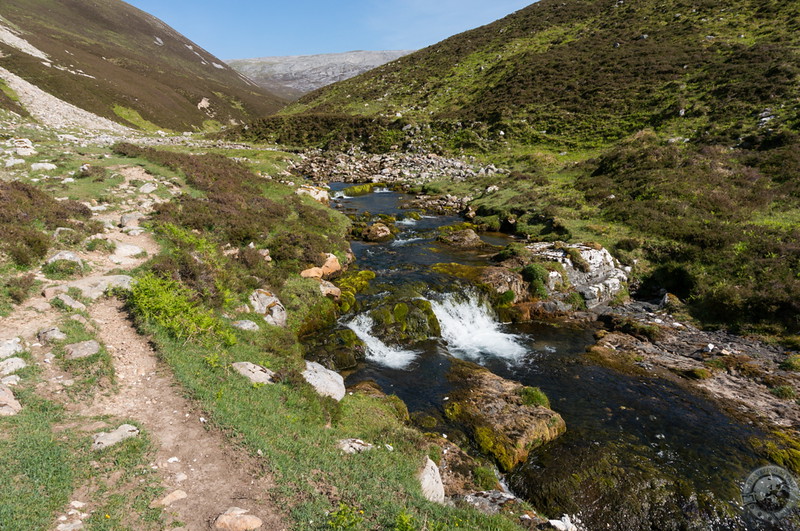
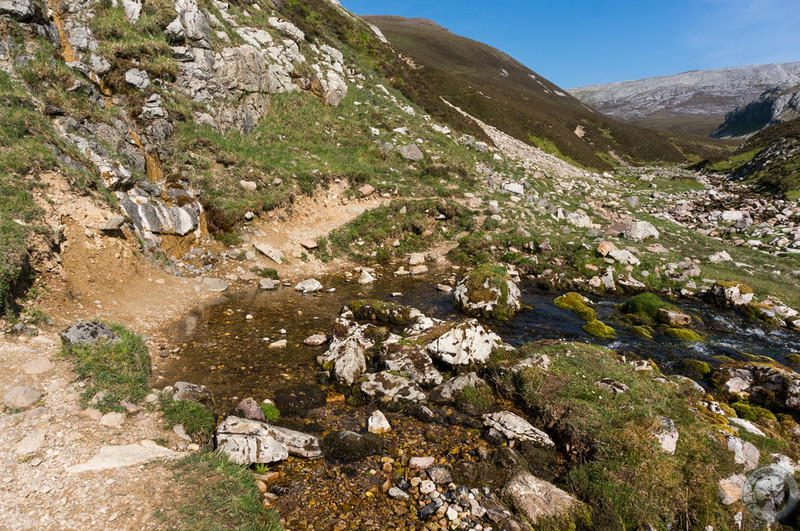
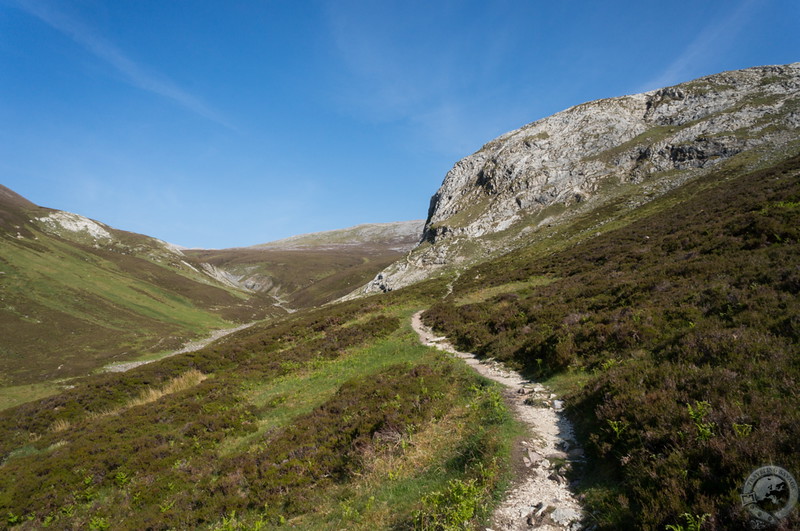
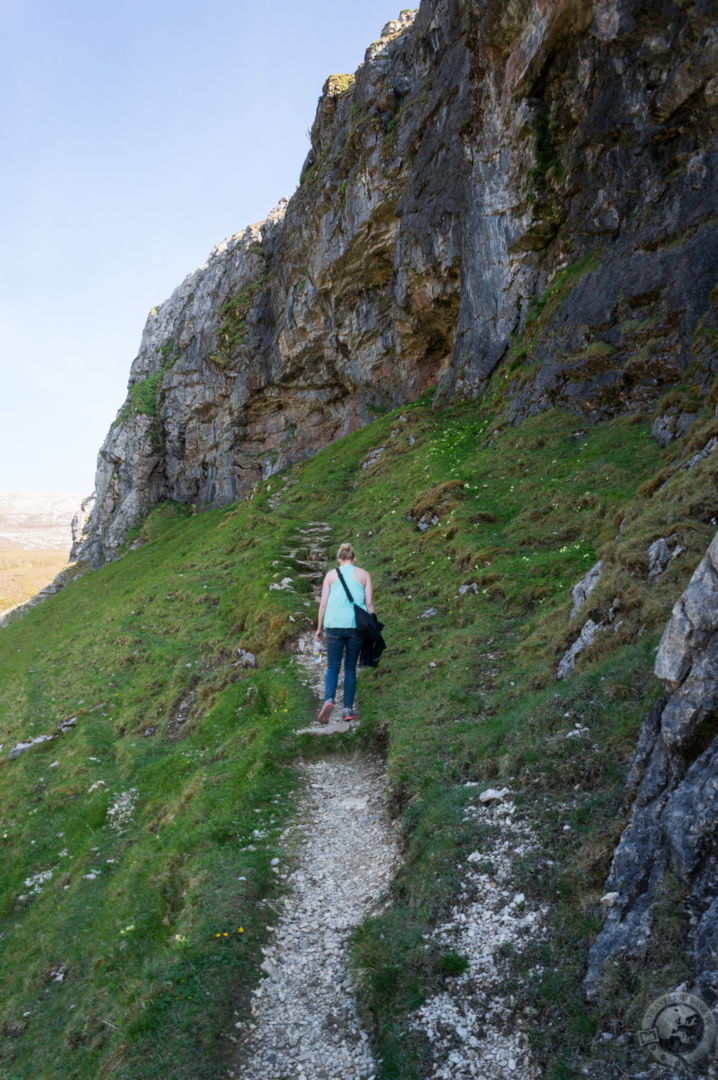
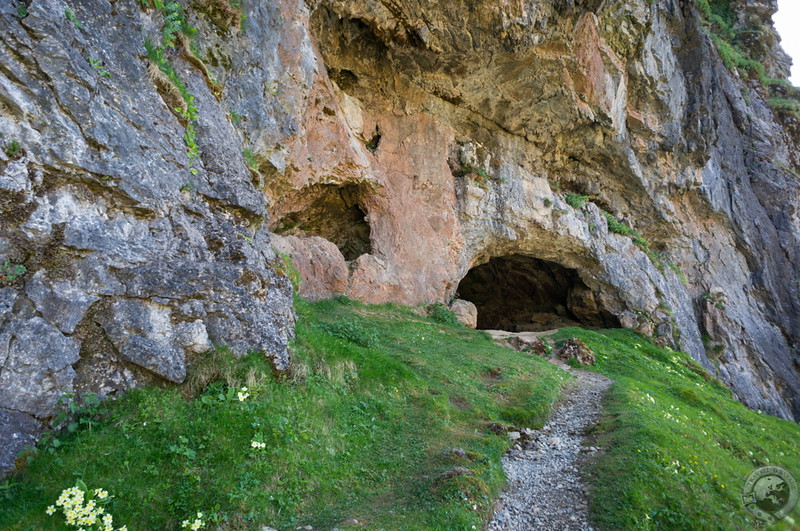
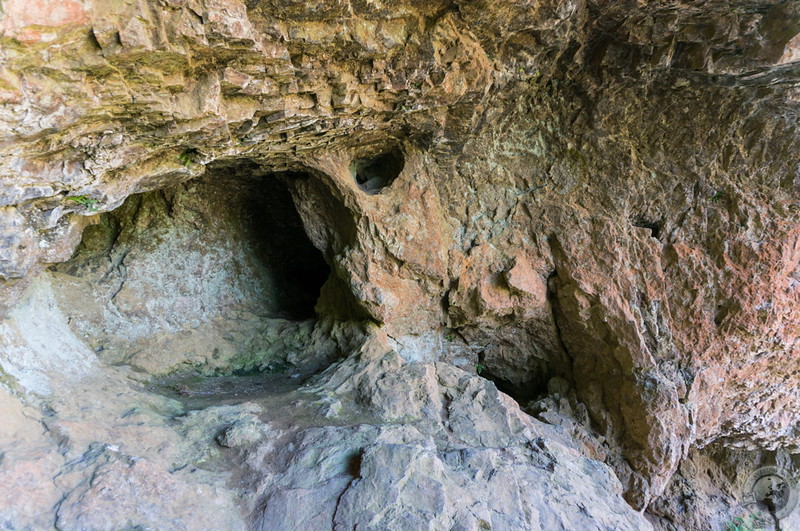
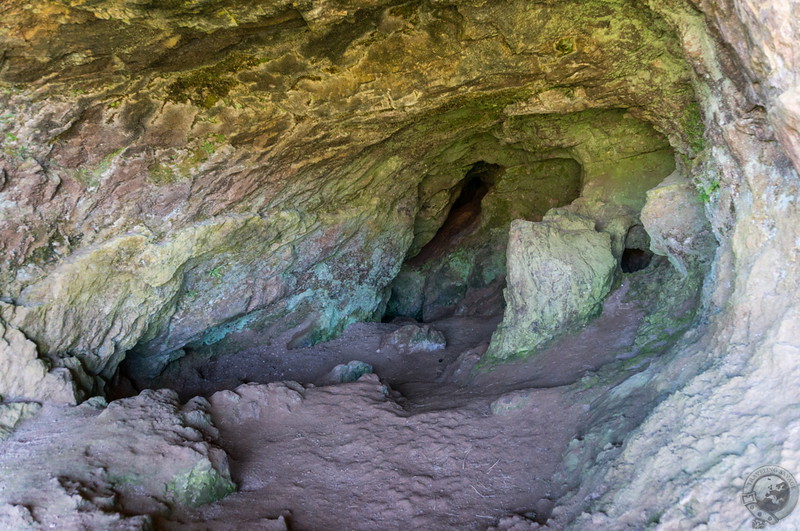
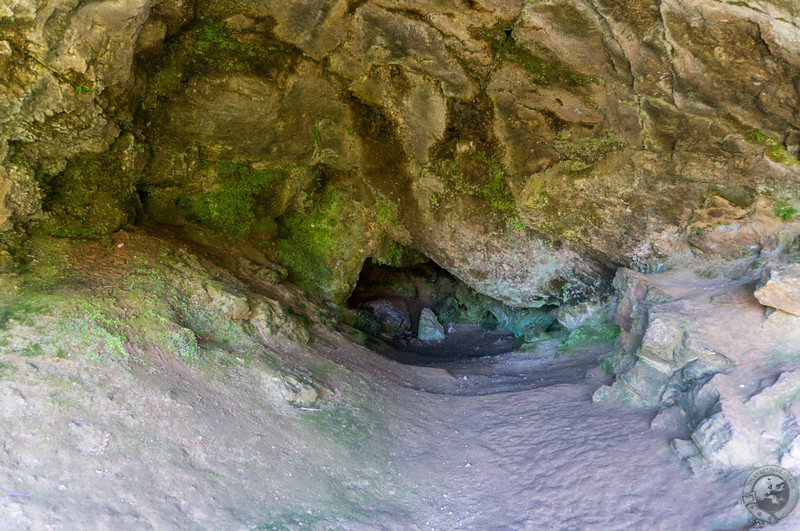
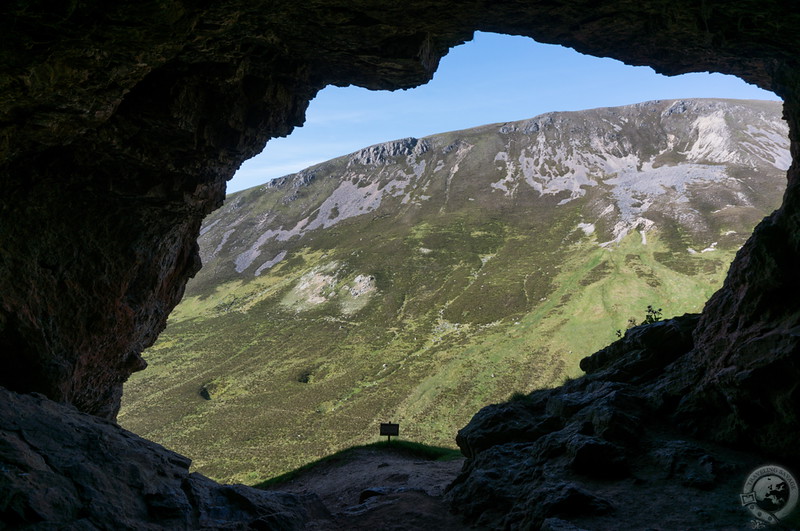
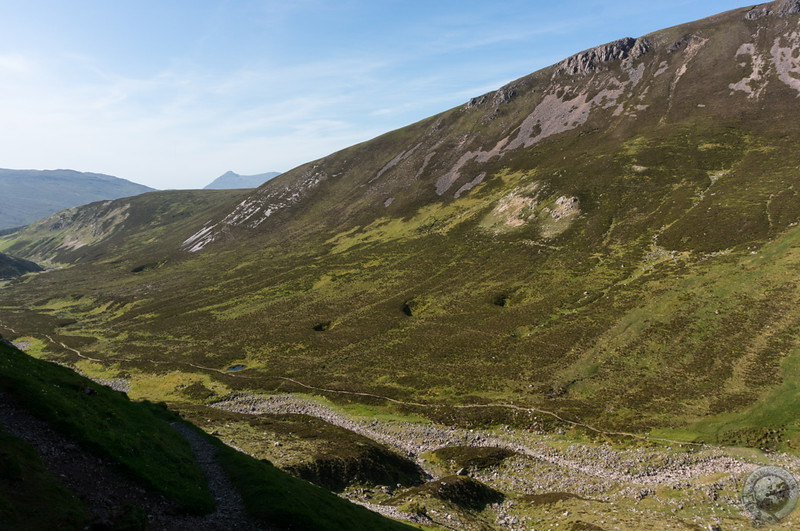
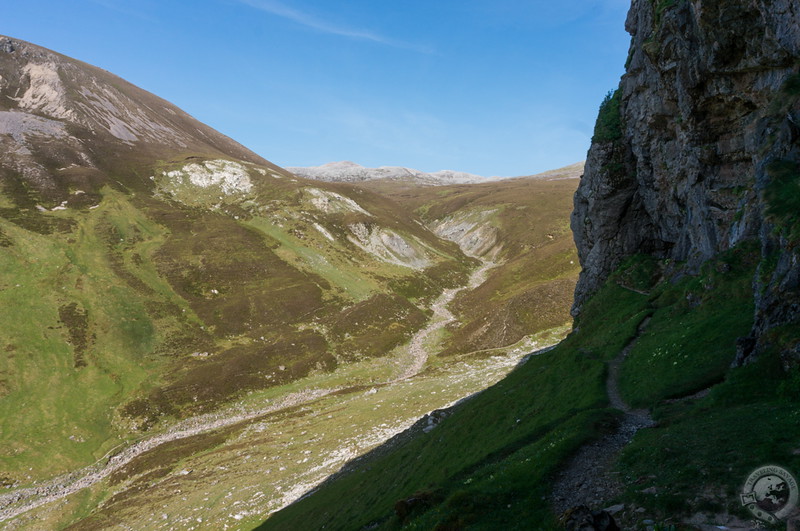
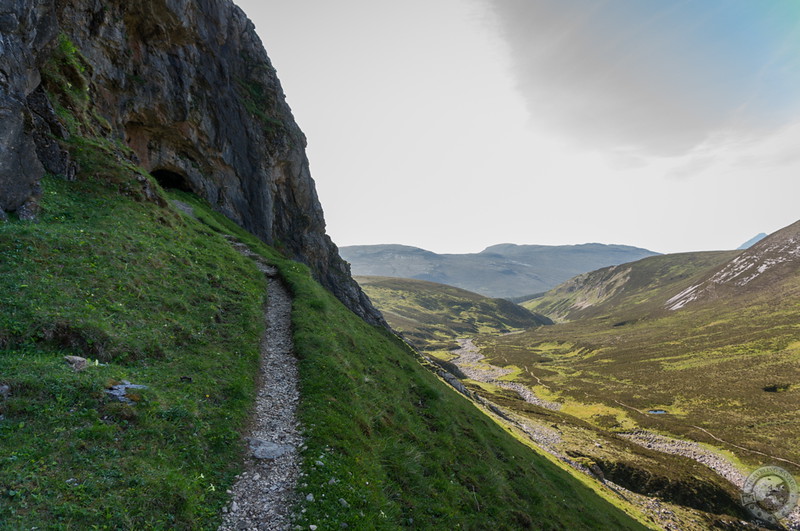
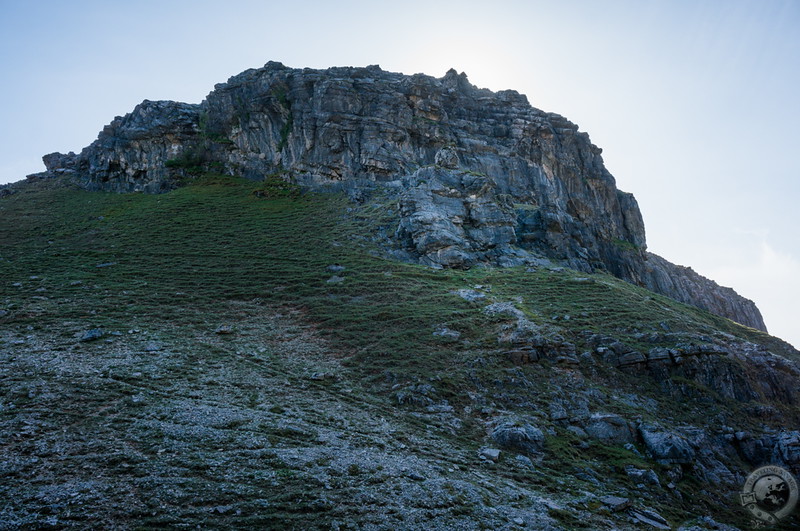
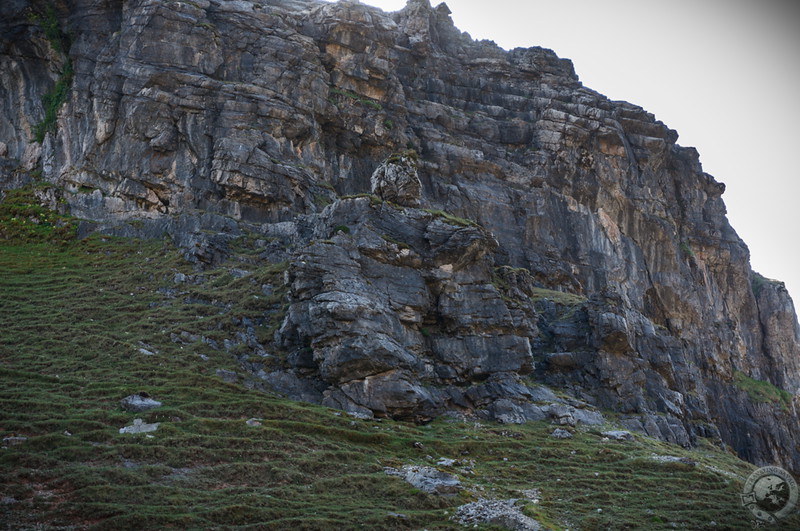
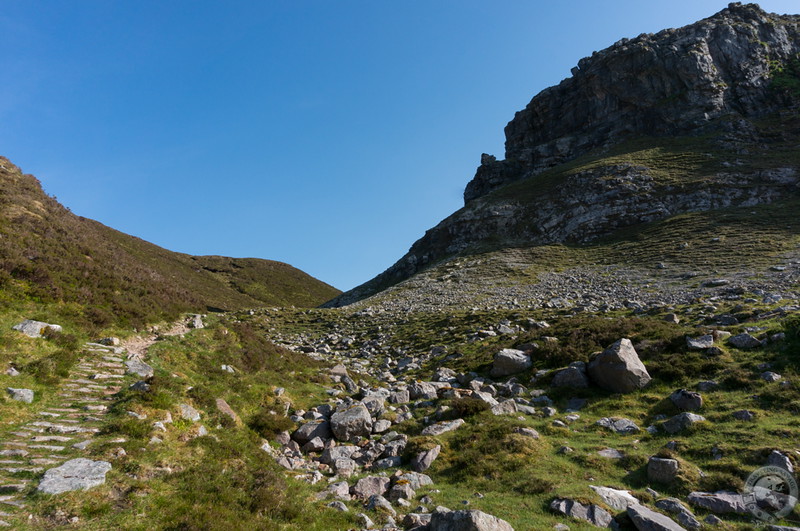
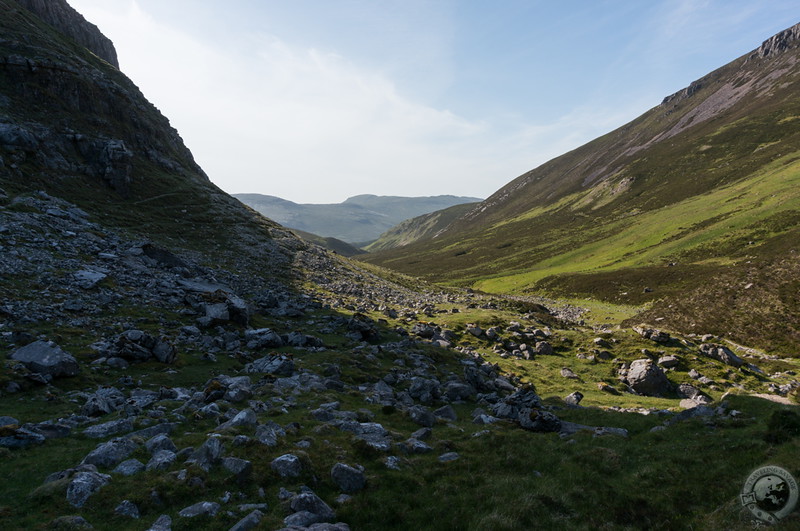
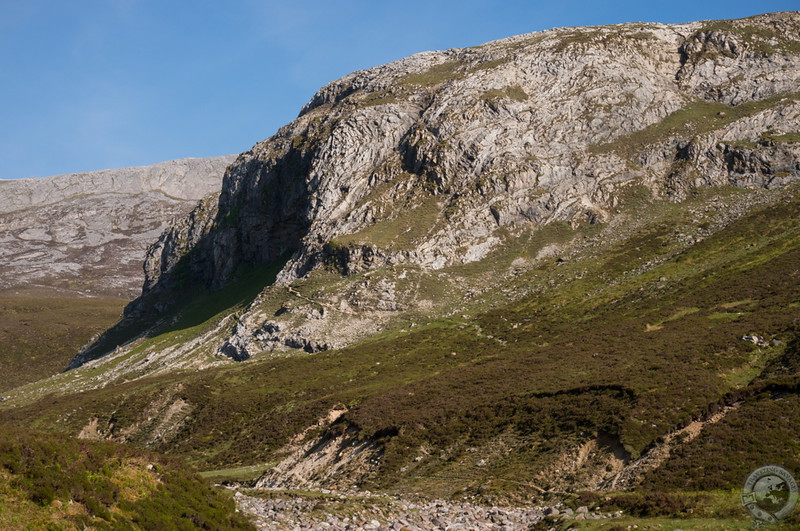
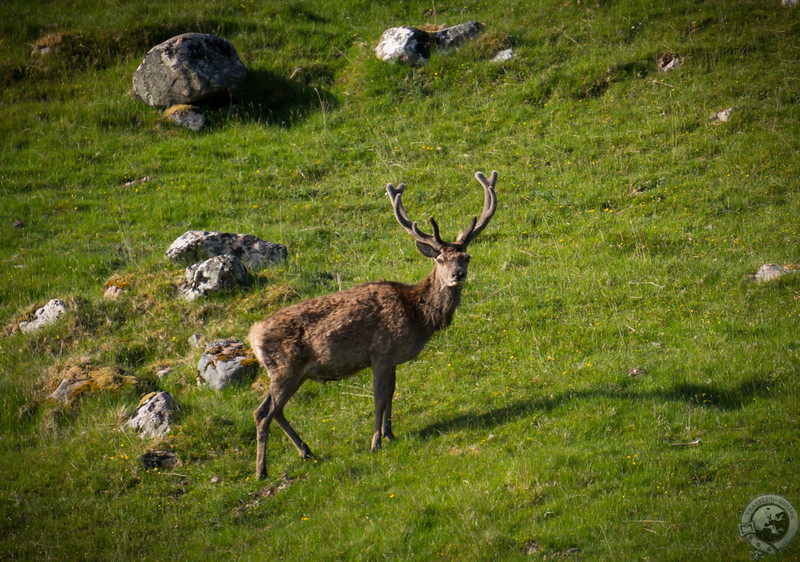
Thanks for this post, Keith. We are heading to the Northwest Highlands in 3 weeks. I was wondering if it would be truly worth it to head north of Ullapool–if there would be any sights worth seeing that far north. You have given me new inspiration! Thanks.
It is incredibly beautiful from Ullapool to Kylesku — don’t miss it!
[…] on the A837. The castle is a great stop on a loop that takes in Achiltibuie, Lochinver, and the Bone Caves of Inchnadamph, and that is when I stopped to investigate one of the only significant castles in the northwest […]
Hi, I am a landscape architecture student from university of Edinburgh. I am doing a landscape design about the sublime. I got the same feeling with you when I was in the Bone Caves. Your post inspired me a lot. I am wondering if you have any ideas about the future development about this area. Do you think people will have the same experience with us in the future, maybe 50 years later? Looking forward your reply. Thanks.
As long as the Bone Caves remain unchanged I see no reason why visitors 50 years from now wouldn’t experience the same catharsis.
Lol, absolutely beautiful and enjoyable afternoon walk, loved the springs to cool my feet on the way back down. Easy going most of the way with a wee steep section by the actual caves!